All About Bats for Kids
Table of Contents
Find great teaching tools that can introduce children to bats through observation, online resources, and children’s books.
Few people know much about the animals that comprise approximately 25% of the world’s mammal population: bats. Much of what they know may be myths. For example, are each of the following statements true or false:
- A bat hung onto the space shuttle Discovery and remained on the fuel tank when the spacecraft lifted.
- A flying fox is actually a bat and can have a wingspan of about six feet.
- Bats feed their pups while hanging upside down.
- Some bats eat frogs or fish.
- Approximately 50% of bat species are endangered or threatened.
- Bats can see.
- Guano, bat droppings, are used to produce some antibiotics and gasohol.
- Some bats sleep with their ears rolled up.
- A bat’s pulse may decrease from 1,000 beats/minute to 11-20 beats/minute.
- Many bats help control the mosquito population or pollinate plants.
- Most bats carry diseases like rabies.
(All of the above are true except the last statement.)
Learn more about chiroptera (bats) and find great teaching tools to make the world of bats come alive for children and adults alike. This might be a great learning opportunity in the Fall, around Halloween, or any time of the year.
See Bats Face-to-Face…or Meet Someone Who Works Around Bats
Some children are fortunate enough to live near a zoo, cavern, or animal habitat that offers a safe yet close-up view of bats in nature. However, since bats are naturally nocturnal, they may not offer much animation when seeing them in their roosts during the day. The Washington Department of Fish & Wildlife offers numerous free online bat videos.
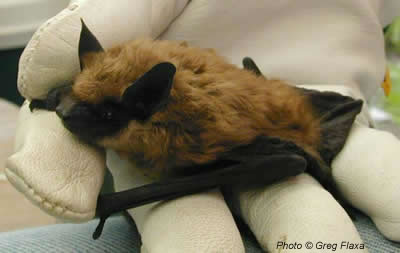
People who professionally extract bats from places like attics may agree to talk to children about bat habitats and how professional extractors are able to protect people’s houses while protecting these wild animals. They may also give information regarding laws to protect bats and what to do if bats get in one’s home.
The Organization for Bat Conservation offers live bat programs and travel around the nation. Their web site offers several educational opportunities for kids, such as an excellent printable bat fact sheet, quiz, slide show, videos, how to build a bat house, certificates, and more. Many resources discourage interacting directly with bats, and children should be taught not to touch bats.
Bat Habitat
Bats live in many different habitats, including caves, abandoned mines, cliffs, rock crevices, woodpiles, under loose tree bark, in dead tree hollows, under bridges, and in barns, attics, and other human structures. In winter when insects become scarce, bats either migrate south to warmer climes or hibernate. They may sleep in winter roosts, or “hibernacula”, for up to six months, living off the fat they have built up in the summer.
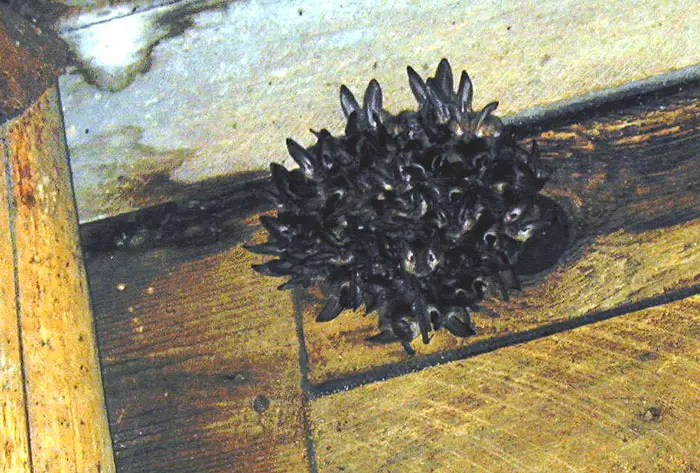
Online Bat Teaching Resources
Wind Cave National Park’s online article “Test Your Batting Average” might be a hit with kids and teachers. It is concise and includes factual information regarding bats, echolocation, the beneficial qualities of these flying mammals, and how to build a bat house.
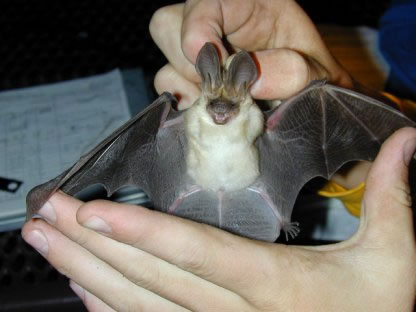
Bat Conservation International offers a large collection of online bat pictures that are high quality and many are close-up. Each picture lists the bat species and may give additional information regarding the bat picture.
Theresa Ann Hamilton’s 2009 online article entitled “The Beauty of Bats” includes simple information about bats, a quick sound experiment, and 10 questions designed to dispel myths about bats.
Animal Diversity Web’s 1995-2008 online article “Order Chiroptera” provides numerous details about bats, including geography, lifespan, reproduction, communication, and much more. This technical article lists numerous sources and provides links.
Children’s Books about Bats
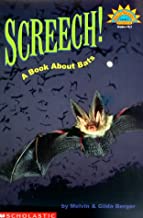 Screech! A Book About Bats
Screech! A Book About Bats
Screech! A Book About Bats by Melvin & Gilda Berger [Scholastic Inc., 2000, ISBN: 0-439-20164-0] is a level three science chapter book designed for children in grades 1 and 2. It has multiple close-up pictures of numerous bat species in their natural habitats. It is packed with interesting and unusual bat facts as well as bat myths at the end.
Flying Bats!
Flying Bats! By Fay Robinson and illustrated by Carol Schwartz [Scholastic Inc., 2001, ISBN: 0-439-33013-0] is a level 1 book designed for children in preschool to first grade. Each page has colorful illustrations, and the various species pictured within the book are named at the back. This one gives general details about insect-eating bats.
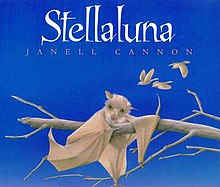 Stellaluna
Stellaluna
Stellaluna, by Janell Cannon [Harcourt Brace & Company, 1993, ISBN: 0-15-280217-7] is a fictional tale about a baby bat that is adopted by a bird family. It contains 46 pages with illustrations on every other page. It lists a few bat facts at the end. This one is an Abby Award winner and a Reading Rainbow book.
A list of other bat books for children may be found at The Organization for Bat Conservation’s web site.
Teaching Kids About Bats
Many adults know very little about bats or may be misinformed about these amazing animals. Because bats are essential in maintaining the natural ecosystem in many areas, educational programs about bats can help to protect these delicate creatures through the use of viewing, online resources and activities, and traditional children’s books.
Bat Resources
brazilianfauna.com is a good resource to learn about species of Bats in Brazil and other native Brazilian animals.
What Can You Do to Help Bats?
- Do not disturb roosting bats
- Provide habitat, whenever and wherever possible:
- Leave hollow trees and snags
- Protect forested areas, wetlands, and cave systems
- Put up bat houses
- Minimize your use of pesticides
- Support bat research
- Support bat conservation groups
Readers are welcome to share their own experiences with bats and any additional bat resources that they have found helpful in the comment box below.
